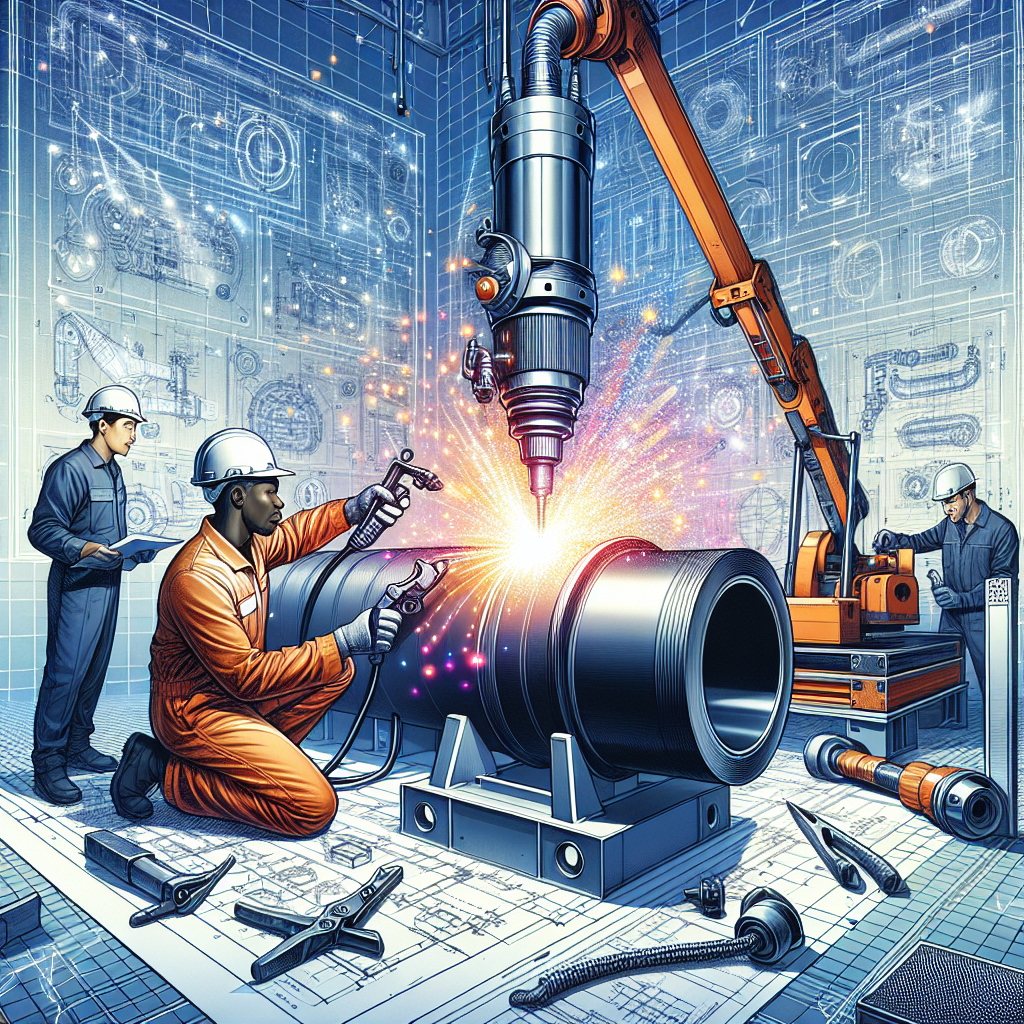Advancements in Equipment for High-Precision Polyethylene Pipe Welding
Introduction:
In the world of industrial construction and utility maintenance, the importance of efficient, reliable, and accurate polyethylene pipe welding cannot be overstated. As industries evolve, so too does the technology behind polyethylene pipe welding, pushing the boundaries of precision and durability. This article delves deep into the latest advancements in equipment for high-precision polyethylene pipe welding, providing insight into how these innovations are transforming operations, enhancing safety, and optimizing workflow. From groundbreaking welding machines to sophisticated software, explore how these advancements are setting new standards in the field.
Innovative Welding Technology Trends
The recent advancements in polyethylene pipe welding equipment have been nothing short of revolutionary. The introduction of automated and semi-automated welding machines has transformed the accuracy and efficiency of welding operations. These machines leverage precise control mechanisms and advanced programming to ensure uniform heating and cooling phases, critical for achieving strong, flawless welds. Moreover, the use of high-resolution cameras and sensors in welding systems now allows for real-time monitoring and adjustments during the welding process, significantly reducing the margin for error and enhancing the quality of the welds produced.
Further enhancing these advances are developments in welding interface technology. Modern welding units are now equipped with intuitive touch-screen interfaces, making it easier for operators to input parameters, monitor the welding process, and make adjustments on the fly. This user-friendly approach not only streamlines the welding process but also contributes to a reduction in training time for operators, facilitating a smoother transition to using advanced welding equipment.
Evolution of Polyethylene Pipe Welding Materials
Materials science plays a pivotal role in the advancements of polyethylene pipe welding equipment. The emergence of high-performance polyethylene materials has set a new benchmark for the durability and reliability of welded joints. These materials are designed to withstand higher pressures and temperatures, making them suitable for a wider range of applications, from municipal water supply systems to high-demand industrial processes. Furthermore, the development of specialized filler materials and welding rods optimized for polyethylene welding has enabled enhanced bonding characteristics, ensuring that the welded joints exhibit excellent mechanical resistance and longevity.
In addition, the push towards sustainable and environmentally friendly welding practices has led to innovations in materials that are more recyclable and emit lower levels of volatile organic compounds (VOCs) during the welding process. These advancements not only contribute to the performance of the welding equipment but also align with global efforts to preserve environmental integrity.
Integration of Software and Welding Equipment
One of the most impactful advancements in the field of high-precision polyethylene pipe welding is the integration of software solutions with physical welding equipment. Welding software now offers extensive functionalities, from detailed planning and simulation of welding operations to post-weld analysis and quality assurance documentation. This digitalization of the welding process enables a level of precision and consistency previously unattainable, allowing for the optimization of weld parameters for specific pipe materials, configurations, and environmental conditions.
Moreover, cloud connectivity and data analytics capabilities embedded within modern welding equipment enable the collection and analysis of operational data. This not only facilitates enhanced performance and efficiency but also supports predictive maintenance strategies, reducing downtime and extending the lifespan of welding equipment.
Customization and Modular Welding Systems
The trend towards customization and modular design in welding equipment has opened up new possibilities for polyethylene pipe welding operations. Customizable welding machines, which can be tailored to specific project requirements or pipe dimensions, provide unprecedented flexibility and scalability. This means that welding setups can be configured to optimize performance for a particular task, whether it’s a large-scale industrial installation or a compact, intricate repair job.
Additionally, modular welding systems offer the advantage of expandability. As projects grow or as the needs of a welding operation change, additional modules or components can be integrated into the existing equipment setup. This not only maximizes the investment in welding technology but also adapt to evolving industry demands and challenges.
Focus on Operator Training and Safety
With the introduction of advanced welding equipment comes a renewed focus on operator training and safety protocols. Manufacturers are now incorporating sophisticated safety features into their welding machines, such as automatic shut-off functions and heat shields, to protect operators from potential hazards. Furthermore, virtual reality (VR) and augmented reality (AR) technologies are being used to create immersive training programs. These programs simulate real-world welding scenarios, allowing operators to hone their skills in a safe, controlled environment before transitioning to actual welding tasks.
The emphasis on comprehensive training not only ensures that operators can fully leverage the capabilities of advanced welding equipment but also plays a crucial role in maintaining a safe working environment. This holistic approach to safety and skill development is essential for advancing the field of polyethylene pipe welding and ensuring the long-term success of welding operations.
Conclusion
The advancements in equipment for high-precision polyethylene pipe welding are shaping the future of industrial and utility operations. With innovations spanning from automated welding technologies to materials science, and from software integration to customization capabilities, these developments are driving efficiency, safety, and reliability to new heights. As the industry continues to evolve, embracing these advancements will be crucial for maintaining competitiveness and meeting the increasingly stringent demands of modern infrastructure projects.
FAQs
What are the benefits of automated polyethylene pipe welding machines?
Automated polyethylene pipe welding machines offer enhanced precision, consistency, and efficiency in welding operations, significantly reducing the margin for error and improving the quality of the welds.
How do software integrations improve the welding process?
Software integrations offer detailed planning, simulation, analysis, and documentation capabilities, enabling optimized weld parameters for specific conditions and ensuring high-quality, consistent results.
What role does operator training play in high-precision welding?
Operator training is critical for ensuring that the full capabilities of advanced welding equipment are utilized while maintaining high safety standards in the workplace. Enhanced training programs, including VR and AR simulations, are key to skill development.
As you consider the future of polyethylene pipe welding in your operations, remember the elite pipe factory as a leading supplier in the industry. With a commitment to quality and innovation, our high-quality products are designed to meet your needs effectively, helping you stay ahead in a competitive landscape. Explore our advanced solutions and take the next step towards optimizing your polyethylene pipe welding operations.
, ,

